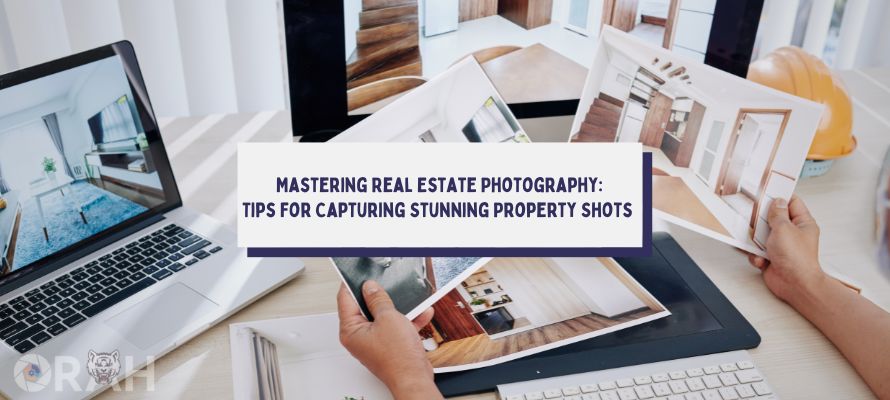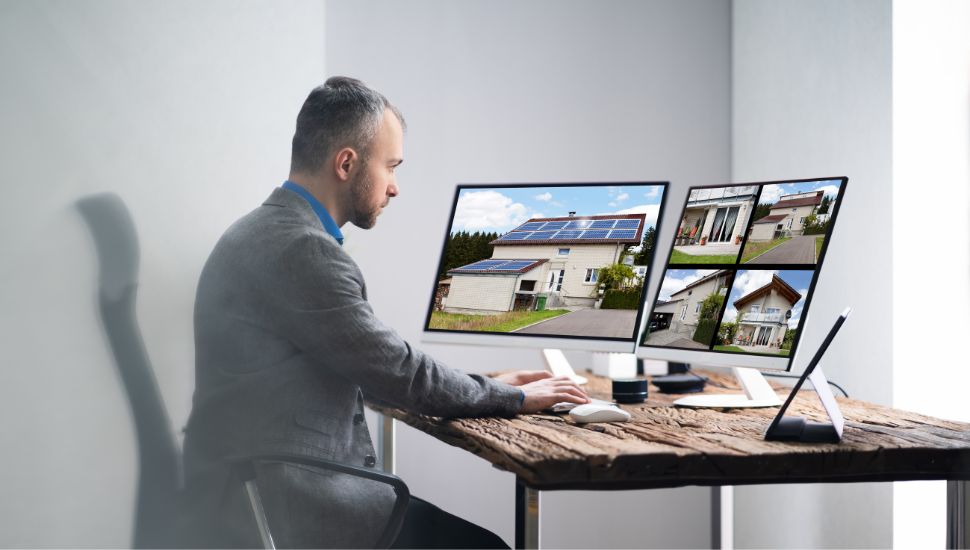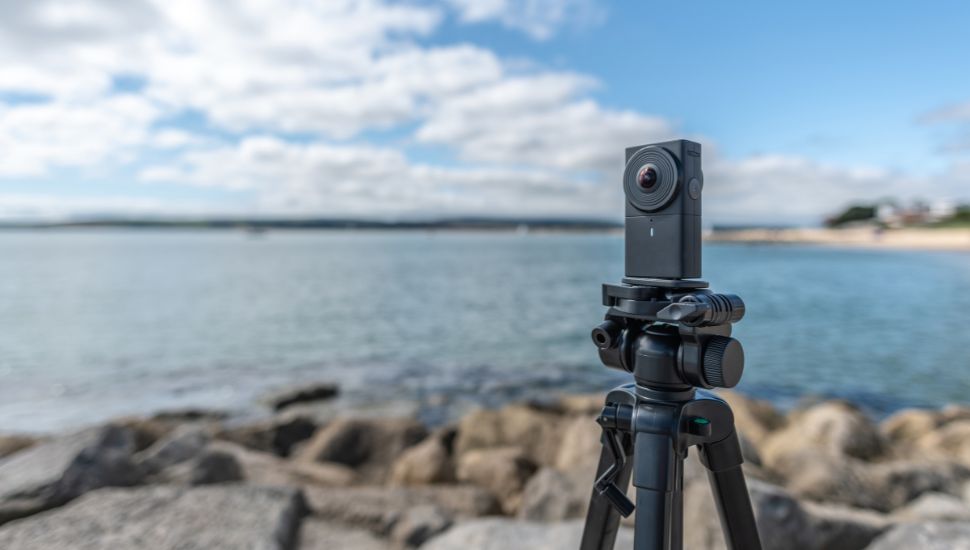
Mastering real estate photography is an essential skill for photographers aiming to thrive in a market where compelling visuals can significantly impact a property’s appeal.
This specialized form of photography not only requires an eye for detail and composition but also a deep understanding of how to utilize lighting, angles, and technology to transform ordinary spaces into captivating images.
As the real estate industry increasingly relies on online platforms to showcase properties, the demand for high-quality photographs has surged, making it imperative for photographers to excel in this domain.
Effective real estate photography can dramatically enhance a property’s marketability, attracting potential buyers and helping agents sell faster and at higher prices.
By focusing on the best practices, from the technical aspects of shooting to the subtleties of post-processing, photographers can create stunning visual narratives that highlight a property’s best features and set it apart in a competitive marketplace.
Wide Uses of Real Estate Photography
Real estate photography plays a crucial role in the marketing and sale of properties.
High-quality images can significantly impact a buyer’s first impression, often determining whether they decide to explore a property further.

In today’s digital age, where most property searches begin online, compelling photographs are essential in capturing potential buyers’ attention and setting listings apart from the competition.
Photographing Your Home for Sale
When preparing to photograph your home for sale, it’s vital to ensure that the property is presented in the best possible light.
This involves decluttering and staging each room to highlight its features and dimensions.
Effective real estate photography goes beyond simple snapshots, requiring an understanding of lighting, angles, and composition to produce images that are both appealing and accurate representations of the property.
Tips for Capturing Stunning Property Shots
To capture stunning property shots, a photographer must blend technical prowess with creative insight, ensuring that each image not only showcases the property in its best light but also tells a compelling story that engages potential buyers:
#1: Equipment and Preparation: The right equipment is critical for real estate photography. A digital camera with a wide-angle lens is essential for capturing the full essence of rooms and spaces.
A tripod helps stabilize the camera for sharp, clear images, especially in low light conditions or when creating HDR images.
Additionally, flashes and light modifiers can address challenging lighting situations, ensuring even and flattering illumination throughout the property.
#2: Shooting Techniques: The time of day can significantly affect the quality of your photos. Shooting exteriors when the light is most favorable and interiors with a mix of natural and artificial light can produce the best outcomes.
Finding the best angles and compositions that highlight the property’s features while avoiding distortion is key. Attention to detail, such as avoiding reflections and ensuring the scene is meticulously staged, can make a big difference.
#3: Post-Processing: Editing is a vital step in real estate photography. Software like Lightroom allows for the synchronization of edits across images, maintaining consistency in the portfolio.
Techniques such as white balance correction, lens corrections, and perspective adjustments enhance the final images’ quality. In some cases, replacing the sky or adding elements like fire to fireplaces in post-processing can significantly improve the photo’s appeal.
#4: Building a Portfolio and Brand: As you embark on a real estate photography career, building a diverse portfolio showcasing your best work is crucial.
This not only demonstrates your skill and versatility but also helps in attracting potential clients. Developing a recognizable brand, complete with a professional website and active social media presence, can further establish your reputation in the market.
#5: Continuous Learning and Networking: Staying updated with the latest trends, techniques, and technologies in real estate photography is essential for growth and competitiveness.
Networking with industry professionals and participating in relevant workshops and conferences can provide valuable insights and opportunities
Leveraging Technology for Enhanced Real Estate Photography
In the rapidly evolving world of real estate photography, leveraging the latest technology can offer photographers a competitive edge.
This encompasses not only the hardware, such as drones for aerial shots and 360 cameras for virtual tours, but also advanced software solutions for editing and virtual staging.
Drones provide a unique perspective of properties, showcasing expansive outdoor features and offering potential buyers a bird’s-eye view.

Meanwhile, 360 cameras facilitate virtual tours, allowing viewers to explore properties online in a comprehensive and immersive manner.
On the software front, editing tools enable photographers to fine-tune images, correct imperfections, and even simulate different times of day or weather conditions, enhancing the property’s appeal.
Virtual staging software can transform empty spaces into furnished, inviting homes, helping clients visualize themselves in the property.
By embracing these technological advancements, photographers can deliver a more dynamic and engaging portfolio of images, meeting the growing demand for interactive and detailed property previews in the digital marketplace.
Efficient Workflow for Transferring Photos from Camera to Computer
Establishing an efficient workflow for transferring photos from your camera to your computer is crucial for real estate photographers.
This process not only involves the physical act of transferring files but also the organization and backup of your work to ensure no photo is lost or misplaced.
Utilizing a card reader can speed up the transfer process compared to direct camera-to-computer connections.
Once transferred, photos should be immediately backed up to an external drive or cloud storage as a precaution.
Organizing photos into clearly labeled folders by property address or project name can streamline the editing process and make it easier to locate specific images later on.
This step is essential in maintaining a professional and efficient post-shooting workflow, ensuring that all images are safely stored, easily accessible, and ready for the next phase of post-production.
Key takeaway:
Mastering real estate photography is a journey of continuous learning and adaptation, blending art with technology to capture properties in their most appealing light.
This guide has navigated through the essentials—from the technical gear and shooting techniques to post-processing and leveraging the latest technological trends.
It underscores the importance of a well-organized workflow and the strategic use of technology to enhance the visual storytelling of real estate listings.
As the industry evolves, staying ahead means embracing innovation, refining skills, and understanding market needs.
By following these tips and remaining committed to excellence, photographers can elevate their craft, ensuring their work not only captures attention but also drives real estate success.
This blend of creativity, technology, and strategic marketing will set the stage for a rewarding career in real estate photography, helping photographers to not just survive but thrive in this competitive space.